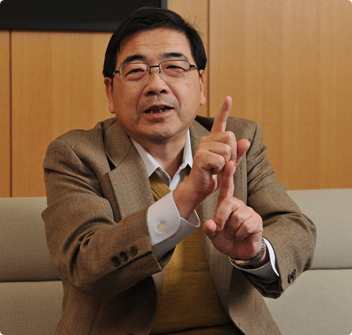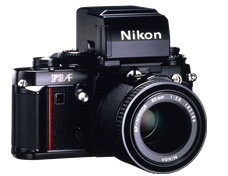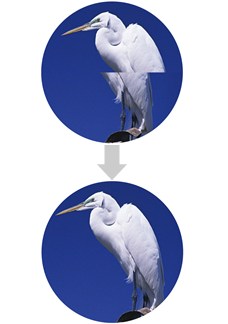Pleasure is creating the very first in the world.
My line of research led the way to an autofocus breakthrough.

These days, all the cameras we see in the marketplace are provided with an autofocus function (AF) — irrespective of camera type, whether compact or single-lens reflex (SLR). Mr. Utagawa, you were involved with autofocus from the very beginning. What was the state of progress at the time you started your work in this field of development?
The first AF camera in the world was the C35AF, marketed in 1977 by Konica Corporation (now, Konica Minolta Holdings, Inc.). It was a compact camera featuring an outboard AF sensor module, not a through-the-lens (TTL*1) single-lens reflex type. An automatic-exposure camera was already available in the market. But an AF camera was still only a dream product at that time. So much so, that this Konica became a huge hit.
What was your impression of this advance?
I was very surprised. I thought the time had come to develop an SLR AF, too.
I expect that AF development was already in full motion so as to challenge the competition.
That’s right. Every camera maker was well aware of the highly competitive situation. For example, there was a rumor that one of the researchers of a certain maker was forced to quit his company because, using an autofocus camera prototype of his own development, he failed to achieve images sharp enough to satisfy a managing director of his company. Apparently, the director was angrily shouting, "why is my face out of focus?" Competition was intense, but concepts and criteria of AF design varied very widely from one developer to another, for example — AF should be sharp, but speed must also accompany this sharpness; or speeds could be rather slow, as long as the AF was sharp enough; and similar concerns.

Nikon F3AF
The Nikon F3AF, the first Nikon AF SLR camera you developed, was marketed in 1983.
In order to realize autofocus operation with the F3AF, we developed a detachable autofocus finder in place of the conventional optical viewfinder, and designed motorized AF lenses to work with it.

A split image (top) is adjusted to focus into one (lower).
How did you achieve success with the F3AF?
In the laboratory at that time, my work was focused on developing an electronic component that would enable Fourier transform*2 operations. Our conventional SLR camera and its viewfinder that uses a split screen enabled us to focus images on the screen by leveling the divided image into one. We used to adjust the split and focus function by turning the focusing ring with the fingers. Then, the AF came along to achieve all this electronically. It was rather easy to adjust focusing using our eyes and hands. However, it was more difficult to use the electronics technologies of that time to achieve precise focusing, detecting the exact distance within a limited, short time. If a photographic subject is thick in depth, there’s a great difference between measuring points in a certain direction — for example, between the nearest and most distant edges of the subject. However, when we used the electronic component we developed that employed the phase theorem of Fourier transform, we found it relatively simple to detect such differences encountered in the measurement of directions and points. We incorporated the results of our work into the design of our first AF TTL SLR camera, the F3AF.
Your line of research corresponded to the trend that led to the adoption of AF by the camera industry.
Exactly. It was fortunate that we were able to employ this newly developed world-first technology in our F3AF. I am proud to report that this technology of ours is still utilized in the mainstream of the AF camera industry today. It helps the camera detect phase difference*3, using an optics system that enables refocusing via the pupil-division*4 method. This allows the camera to feed back information in analog form as phase difference, at a speed of 2,000 times per second, attaining almost real-time focusing. This is an amazingly fast speed when we consider the level of technological advancement at the time the device was developed.
- *1Through The Lens (TTL): TTL measurement of light and distance in a camera is made through the same lens used for photography, which can provide more precise exposure-time and distance information than non-TTL measurement via external sensor.
- *2Fourier transform: A formula that uses a Fourier integration theorem discovered by French mathematician Jean Baptiste Joseph Fourier (1768–1830). This formula produces an analysis of a function of variables, for example, of wave motion, and determines what frequency and width their waveforms are.
- *3Phase difference detection method: Also known as the image deviation detection method, it is designed to utilize intentionally created variations.
- *4Pupil-division refocusing optical system: Optical system that produces image deviation for refocusing purposes.
Our AF development was assisted by technological advances in various fields.
Then, your involvement in AF development was further accelerated.
Yes, I became much more deeply involved. When Minolta’s α-7000 TTL SLR camera was introduced two years after our F3AF, it came with the AF module built inside the body. With the launch of this camera into the market, the competition for developing AF TTL SLR cameras became extremely harsh. At that time, our successor model to the F3AF was not yet perfected. With news of the release of the α-7000, we felt more or less outsmarted. This triggered us to accelerate our efforts. It was not only this event that drove us to speed up development, but also the fact that technologies at the time were evolving very rapidly in various other fields, which helped us find our solutions rather easily.
What kind of technologies helped you in your research?
One of them was a storage-type image sensor, a device capable of catching very faint light. Then, a one-chip microprocessor was developed, which was an even bigger breakthrough. This enabled us to realize programming of various operations to deal with diverse situations, making the speed of processing incomparably faster than that achieved using an analog device. A microprocessor was the key to advanced capabilities such as complicated calculation and judgment previously thought impossible within the compact confines of a camera.
This is my personal feeling, but I believe that the performance of microprocessors was further enhanced to a higher level thanks to our industry’s demands to develop their capacity so that they could satisfy our needs for AF performance. I might also say that the technological breakthroughs of the camera industry produced the same great impact as those of the automobile industry, influencing many other fields.
Another technology I want to refer to is related to plastics manufacturing, which also experienced a great advance at that time. Cracks had often occurred in the cleansing of optical modules with particular shapes, which was a very serious manufacturing problem. But as plastics technology advanced, the industry succeeded in producing a manufacturing process which obtained a precise finish on plastics that met requirements for optical performance. In short, mass production of plastic optical modules became a reality. Such technological advances greatly contributed to overall breakthroughs in AF development within the camera industry.
You have been deeply involved in the history of Nikon’s AF development.
When I joined Nikon, AF was a dream technology thought to be impossible. Look at it now. AF is just a common feature of any camera. It was our task in the laboratory to design a product that never existed before. Absolutely nothing was certain ahead of us when we started. No one could tell if or when an actual product would come to life. No one really knew what level we would achieve as results were dependent on specific criteria determined by the technological capabilities and market requirements of the time. We were struggling in the dark. But one thing was clear in our minds and that was that we would produce the best we possibly could. Nothing else could match this feeling — the kind of pleasure only experienced when you create something that has never existed before.
